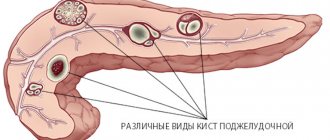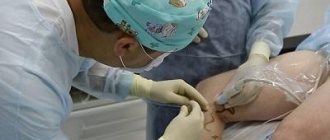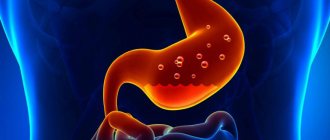Specialization: endocrinology
L. P. Sleptsova, endocrinologist of the highest category, OXY-center infertility clinic, Krasnodar
Vaginal atrophy is a symptom of postmenopause, characterized by an estrogen deficiency state in women. The urogenital tract is especially sensitive to decreased estrogen levels. 27–55% of all postmenopausal women experience symptoms associated with urogenital atrophy (UGA), affecting sexual function and quality of life.
The clinical picture of urogenital disorders in the menopausal period includes symptoms associated with vaginal atrophy, as well as urination disorders (cystourethral atrophy). If vasomotor symptoms resolve over time, signs of vaginal atrophy progress. 40–57% of women experience vaginal dryness, burning and itching, dyspareunia, bleeding, urinary incontinence, and pelvic infections.
The walls of the vagina consist of three layers: internal, middle muscular and external connective tissue. Atrophic processes involve muscle and connective tissue structures, as well as the muscles of the pelvic floor, urethra, and bladder. They are especially pronounced in the vaginal mucosa, which consists of 4 main layers of epithelial cells: basal, parabasal (mitotically active), intermediate glycogen-containing and superficial exfoliating. Estrogen receptors are mainly located in the basal and parabasal layers and are practically absent in the intermediate and superficial layers. Estrogen deficiency blocks the mitotic activity of the basal and parabasal layers of the epithelium and the proliferation of the vaginal epithelium. The consequence of the cessation of proliferative processes is the disappearance of glycogen - a nutrient medium for lactobacilli, and the complete elimination of lactobacilli, which play a key role in the prevention of diseases of the urogenital tract. Due to the breakdown of glycogen, provided there is a sufficient amount of estrogen, lactic acid is formed, providing an acidic environment within the range of pH fluctuations from 3.8 to 4.4. A similar mechanism leads to suppression of the growth of pathogenic and opportunistic bacteria. During the postmenopausal period, the mucous membrane loses its protective properties, becomes thinner, and is easily injured with subsequent infection.
Atrophy of the mucous membrane of the vulva and vagina is characterized by thinning, a decrease in vaginal folding, pallor, the presence of petechial hemorrhages, signs of inflammation, and also a loss of tissue elasticity, subcutaneous fat, loss of pubic hair, and a decrease in the secretory activity of the Bartholin glands. Typically, doctors diagnose vaginal atrophy based on a combination of clinical symptoms, visual examination, and the patient's subjective complaints.
To diagnose and evaluate the effectiveness of treatment of vaginal atrophy, it is necessary: pH and calculation of the vaginal maturation index (VII, predominance of cells of the basal and parabasal layers), a multisteroid blood profile.
What is vaginal atrophy?
Vaginal atrophy (also called atrophic vaginitis or colpitis) is a condition in which the vaginal lining becomes drier and thinner. Most often occurs during menopause, a “lifestyle change” due to a decrease in the level of the hormone estrogen. Hormones are produced, stored and secreted by the endocrine system, a network of glands and organs. Women need estrogens for good health, especially during childbearing years. When menopause occurs around age 50, the ovaries produce fewer hormones and the woman stops having periods. But the condition of vaginal atrophy also occurs in young women when their estrogen levels are disturbed.
The mechanism of development of atrophic changes in the walls of the vagina
The vaginal mucosa is a stratified squamous epithelium, which before menopause is moist and thick with wrinkles. During menopause, when estrogen levels decrease, this epithelium becomes thinner. Fewer epithelial cells result in less cell shedding in the vagina (see diagram). When epithelial cells slough off and die, they release glycogen, which is hydrolyzed to glucose. Glucose, in turn, is broken down into lactic acid by lactobacilli, normal inhabitants of a healthy vagina. Without this cascade, vaginal pH rises, leading to loss of lactobacilli and overgrowth of other bacteria, including group B streptococci, staphylococci, coliforms, and diphtheroids. These bacteria can cause symptomatic vaginal infections and inflammation. This results in itching, burning and pain during sex, among other symptoms, and includes urinary tract infections (UTIs) and frequent urination. Recently, the term “vaginal atrophy” has been proposed to be replaced by the new term “genitourinary menopausal syndrome.” It involves not only vaginal but also urinary symptoms, which can be caused by low estrogen.
Who is at risk for vulvovaginal atrophy?
Women aged 50 years and older during menopause are most susceptible to vaginal atrophy. Other reasons that increase your likelihood of developing it include:
- Lack of sexual intercourse.
- Decreased ovarian function due to chemotherapy or radiation.
- Immune disorders.
- Medicines with antiestrogenic properties.
- Ovariectomy (removal of the ovaries).
- Postpartum estrogen loss.
- Breast-feeding.
Causes of atrophy
During menopause, your body produces less estrogen. Without estrogen, the lining of your intimate area may become thinner and less elastic. The vaginal canal may also narrow and shorten. Low amounts of estrogen reduce the amount of normal vaginal fluids. It also changes vulvovaginal acid balance.
Women who have just given birth and are breastfeeding also experience a decrease in estrogen levels. These symptoms also occur in patients who have had their ovaries removed or who are taking certain medications (such as aromatase inhibitors for breast cancer). And the first sign of mucosal atrophy is usually insufficient vaginal moisture.
Risk factors
There are two main factors that can increase your chances of vaginal atrophy:
- Smoking. It restricts blood flow, including in the vaginal area. Also reduces the natural amount of estrogen in your body.
- No vaginal birth. Those who have not had a vaginal birth are more likely to have these problems than those who have.
Clinical manifestations
Symptoms of vaginal wall atrophy may include:
- Vaginal dryness.
- Burning and/or itching in the vagina.
- Dyspareunia (pain during sex).
- Vaginal discharge is usually yellow in color.
- Spotting and spotting
- Bleeding from the vagina after sex.
- Itching of the vulva (desire to scratch between the legs).
- Feeling of pressure in the perineum.
Signs of atrophic changes in the urinary tract:
- Desire to wash yourself more often.
- Pain when going to the toilet.
- Urinary tract infections (UTIs).
- More acts of urination.
- Stress urinary incontinence.
- Painful urination (dysuria).
- Blood in the urine (hematuria).
- Burning when urinating.
The first symptom is usually a lack of lubrication during intercourse. Over time, persistent vaginal dryness may occur. Thinning of the epithelial lining can also cause itching, tenderness, and stinging pain in the vaginal and vulvar areas, which in turn can further contribute to dyspareunia. Spotting may also occur due to small tears in the vaginal epithelium. Women with genitourinary menopause syndrome may report a thin yellow or gray watery discharge without much itching or odor.
Photo 1. Microphotographs of superficial and intermediate cells (left) and atrophic cells (right). (Pap test, original magnification x20).
Photo of a normal smear and with atrophy of the vaginal mucosa
Diagnostic methods
A gynecologist can diagnose vaginal atrophy based on symptoms and a gynecological examination, which will show what the vagina looks like. This will help you know if you have reached menopause. Classic signs of vulvulvaginal atrophy during a pelvic examination include:
• Shortened or narrowed vagina. • Dryness, redness and swelling. • Loss of skin elasticity. • Whitish discoloration of the mucous membrane. • Rare pubic hair. • Bulge along the back wall of the vagina. • Skin diseases of the vulva (dermatoses). • Lesions of the vulva and/or redness of the vulva (erythema). • Bladder sagging in the vagina. • Changes in the external urethral meatus. • Minor cracks (tears) at the vaginal opening.
What tests need to be taken:
- Oncocytology of the cervix.
- General urine analysis.
- Ultrasound of the pelvic organs.
- Serum hormone test.
- Vaginal pH test.
- Microscopy for flora (see the entire catalog of analyzes).
Table 1. “Difference between vulvovaginal atrophy and other pathology of the intimate area.”
| Lichen planus | Painful red plaques or erosions, sometimes with white lacy edges or purple edges; may spread to the vagina |
| Lichen sclerosus of the vulva | Hypopigmented, wrinkled, wax-like tissue with confluent ivory and pink plaques, often in a butterfly or figure-eight pattern, enclosing the labia majora, minora and clitoral hood and extending around the anus; may lead to labial agglutination |
| Contact dermatitis | Redness, swelling and itching, sometimes with blistering and painful bright red swelling |
| Lichen simplex chronicus (hyperkeratosis) | Thick, lichen-like skin, often erythematous, caused by prolonged rubbing or scratching |
| Intraepithelial neoplasm of the vulva | Red, white or dark raised or eroded lesions, multifocal |
| Vulvar cancer | More often it is an ulcer with a raised or thickened edge |
| Extramammary Paget's disease | Brick-red scaly eczematoid plaque with a sharply defined border and sometimes rough surface |
Why atrophic vaginitis needs to be treated
Age-related changes in the body are natural and inevitable, but this does not mean that the negative processes that develop during the aging process do not need correction and treatment. Thinning of the vaginal mucosa leads to an imbalance of microflora, increased tissue sensitivity and vulnerability to all infectious pathogens. In addition, the woman experiences a number of unpleasant sensations:
- dryness, itching, burning in the vaginal area;
- frequent urge to urinate;
- pain during sexual intercourse;
- decreased fertility.
Cure vaginitis
Treatment of vaginal atrophy
When should I see a doctor about vaginal atrophy? Even if you are not going through menopause, be sure to report any symptoms of dryness, pain, burning/itching, trouble urinating, UTIs, unusual spots, bleeding or discharge to your doctor. If weeks go by and the over-the-counter medications you take for dryness don't work, you should see your doctor. If you see unusual discharge or bleeding, this is also a reason to contact a specialist. Also, always consult a good gynecologist for any symptoms that are negatively affecting your daily life.
How to treat vaginal atrophy
The patient and her physician will work closely to develop a treatment plan for vaginal atrophy that is most effective based on the symptoms and their severity. Some methods are designed to treat symptoms of atrophy. Others aim to compensate for the loss of estrogen. According to reviews, estrogen therapy is considered the most effective addition to intimate rejuvenation procedures.
1. Lubricants and moisturizing creams to moisturize and relax the vagina can treat dryness. This improves comfort during sex, but will not completely restore the health of the intimate area. Vaseline is NOT recommended for use in the vagina as it can cause a yeast infection. Although many women use olive or coconut oil as a moisturizer and lubricant, it can sometimes cause allergic irritation in the area. Vitamin E and mineral oils should be avoided.
2. Dilators are devices that widen (widen) the vagina so you can get back to having sex. Women often start with a narrow dilator and move up to larger sizes over time. This is done until the vagina is wide enough for the penis to enter without pain for sexual activity. The best results are achieved when dilators are used in combination with topical hormonal therapy.
3. Hormone replacement therapy not only effectively improves the symptoms of vaginal atrophy, but also restores health to the skin by restoring the normal acid balance of the vagina, thickening the mucous membrane of the walls (to its original state), maintaining natural moisture and improving the balance of bacteria.
For women who only have symptoms of vaginal wall atrophy, there are several options that deliver estrogen only to the vagina. These options may help avoid high hormone levels in the rest of the body. Women who experience many other menopausal symptoms, such as hot flashes and trouble sleeping, may choose higher doses of hormone therapy to treat all of their symptoms (called systemic hormone therapy). Topical hormone administration will not treat any symptoms of menopause other than vaginal ones.
Next, look at the most important auxiliary therapeutic techniques for influencing the intimate area, which effectively complement the main course or are an important part of it.
Additional Methods
The specialists of our clinic offer a wide range of effective means of relieving and even relieving the symptoms of vaginal atrophy, proven by many years of experience.
For example, this could be the injection of autoplasma into intimate areas, injections of hyaluronic acid to relieve dryness of the mucous membrane of the vagina and vulva, treatment of stress urinary incontinence, etc. The sooner you start treatment, the less likely it is that vaginal atrophy will worsen. For example, the longer you go without estrogen, the drier your vagina becomes. Yes, without treatment, vaginal atrophy can get worse. Sometimes it can become so severe that it can significantly narrow the vaginal opening. This can make treatment difficult if it is started too late.
assignment_ind
Intimate contouring
Atrophy and sex life
You should not avoid sexual activity if your gynecologist has diagnosed you with vaginal atrophy. Lack of sexual activity actually makes the condition worse. Sex stimulates blood flow in the mucous membrane and promotes fluid production, so sex actually keeps the vagina healthy. If you experience dryness and discomfort during sex, vaginal moisturizers or water-based lubricants may help. Use them every few days and just before sex. What else contributes to his health can be found out in detail on this page.
Where to go in Moscow
Vaginal atrophy is serious for women during menopause. It affects your quality of life with discomfort, frequent trips to the toilet, frequent UTIs, burning, pain during sex and much more. Fortunately, there are many treatments available, and your doctor can help you find the best option to treat your symptoms. Seek treatment. Don't be afraid to talk to your doctor and your partner. Always follow the instructions of your gynecologist and do everything possible to prevent vulvar and vaginal atrophy from getting worse! We invite you to visit specialists from the gynecology department of our Moscow clinic.
Helpful information:
✍ Make an appointment with a gynecologist ☎ +7(495)790-0779 ☎ +7(495)797-7825
1.General information
Vulvovaginal dystrophy (VVA) is a process of age-related histomorphological degeneration of the tissues of the vagina and genitals, as a result of which these parts of the female reproductive system gradually lose their natural properties and functions: they dry out, shrink in size, change in proportions, etc.
Large-scale events were carried out repeatedly, incl. international, surveys and research on this problem. The results indicate that VVA to varying degrees (as a clinically formed syndrome or as individual manifestations) is common with a frequency of 45-60% among postmenopausal women.
Almost all respondents note in this regard a significant decrease in the quality of life, especially in the psychosexual sphere, family relationships, self-esteem, and the area of subjective physiological comfort. At the same time, up to 80% of women are embarrassed, consider it unnecessary or useless to discuss the problem with their gynecologist; less than 40% have sufficient information about the essence of the changes taking place.
Thus, the problem of vulvovaginal dystrophy is acute and relevant even in the most developed countries of the world.
A must read! Help with treatment and hospitalization!
Advantages of visiting the Med City clinic
The Med City laser medicine clinic employs the best specialists in Ukraine in the field of laser technologies, trained abroad and using the latest generation equipment from the Italian company DEKA. Our achievements in the treatment of gynecological diseases were highly appreciated by patients from different cities of our country and abroad.
We know how to develop an individual program that will be as effective and safe as possible. All prescriptions are based on an in-depth analysis of health status, as well as a set of indications and contraindications.
Hormone therapy has a number of serious contraindications, which primarily include:
- malignant tumors of the reproductive system
- precancerous condition;
- chronic kidney and liver diseases;
- a history of myocardial infarction or stroke;
- vein thrombosis;
- persistent hypertension and some other diseases.
Given the progressive increase in the number of cancers, including breast cancer, the use of hormones in the treatment of atrophic vaginitis is becoming increasingly risky.
Gynecologists must carefully assess possible complications and, above all, take into account hereditary predisposition, that is, the presence of cancer pathologies in close relatives. If you have a family history of breast cancer, it is better not to prescribe synthetic hormones in order to reduce the risk of developing a more dangerous disease than age-related vaginitis.
Phytoestrogens contained in plants act more gently on the body, without causing serious consequences, even with long-term use. However, pharmacological agents containing natural plant estrogens are also contraindicated in patients with diagnosed tumors and certain chronic liver diseases.
Local preparations
Local medications are prescribed to restore the natural vaginal environment. For this purpose, vaginal suppositories containing live lactic acid bacteria are prescribed. Local agents are almost not absorbed into the blood, so they do not cause side effects.
If the doctor finds signs of inflammation caused by infectious pathogens, antimicrobial drugs and antiseptics are prescribed. This list includes formulations based on synthetic substances and plant components, which include extracts of medicinal plants. When urination increases, uroseptics, physiotherapy, and exercise therapy are prescribed.








